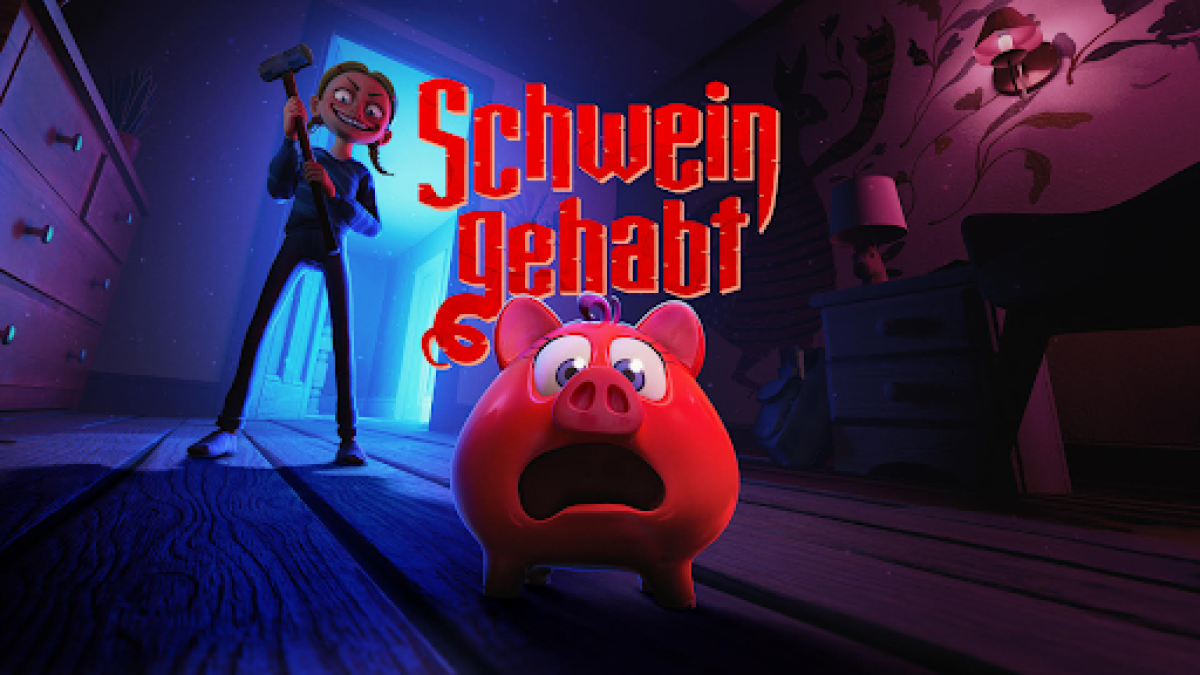A horror-themed Fortnite game shows how creatives should approach the fickle gaming market

Jung von Matt Sports and Sparkasse’s horror-themed Fortnite game is the latest brand attempt to win over the blockbuster gaming market. But how best to approach this discerning sector?
Jung von Matt Sports has joined forces with German bank Sparkasse to create a horror-themed game on Fortnite. The game, 'Schwein Gehabt', which translates in English as ‘having a pig’ (an expression also meaning ‘being lucky’), will be launching in Germany.
The premise is simple, if a little oddball. Players must rescue piggy bank Berta from a haunted house while participating in a series of challenges. The game, created in collaboration with gaming studio Beyond Creative, is the first venture into Fortnite for Sparkasse. However, the bank has already launched gaming experiences with eSports team Eintracht Spandau, led by streamer HandofBlood.
The game is being promoted via a horror-movie style trailer, which features a little girl terrorising a piggy bank, created by JVM Sports with Passion Pictures. Sparkasse will also be featuring the Fortnite game nationwide in its own branches with giveaways, cardboard displays and other products.
Serious outreach
The depth of market understanding that went into the release was outlined by Janine Schumann, head of campaign management in the newsroom of the Sparkassen-Finanzgruppe. She said that anyone aiming to reach young people today must ‘understand their culture, and participate in shaping it’, stressing the importance of working closely with the gaming community from the very beginning.
“‘Schwein Gehabt’ is not a marketing stunt, but a contemporary experience that takes gaming seriously, in attitude, quality, and storytelling," she added.
Kevin Claus, client service director at Jung von Matt SPORTS, continued: “The savings banks have once again demonstrated, through the ambitious development of ‘Schwein Gehabt’, that they understand the importance of the most significant entertainment industry, gaming, in the everyday lives of many young people. We are proud to be part of this journey from the very beginning and look forward to the community's feedback and the upcoming highlights that will follow this year.”

Our take
Video game tie-ins are a seemingly obvious play for creatives, given the vast world-building potential and giant captive audience. But while it seems the decision-making from the teams behind ‘Schwein Gehabt' is on the right track, things don't always work out as planned.
Video games now dominate global entertainment, and brands are increasingly leveraging tie-ins to appeal to the 3.4 billion gamers worldwide. Companies position their products typically through in-game advertising, branded content, and, as in this case, a ‘custom-built advergame’.
Success, however, rests on execution, authenticity, and audience alignment.
Burger King’s 2006 advergame ‘Sneak King’ for Xbox was a notable success story. It sold 2.7 million copies in its first weeks, contributing to a reported 40% sales increase for the chain during that quarter. Similarly, a Nielsen study with Electronic Arts and Gatorade showed that in-game advertising led to a 24% increase in household spending on Gatorade, with a $3.11 return on investment per dollar spent.
But, before you eagerly start pitching the idea to your unsuspecting clients, it’s worth looking into a few failures. Many criticised tie-ins, including Burberry in Minecraft or Katy Perry’s DLC (downloadable content) in The Sims 3, as feeling forced or out of place. Such missteps can alienate gamers, who value authentic integration and genuine fun.
Brands like Nike, Coca-Cola, and Louis Vuitton have thrived by targeting gaming demographics. Louis Vuitton’s partnership with League of Legends included in-game skins and a real-world clothing line that sold out in an hour, demonstrating how to do things right.
Similarly, Wendy’s ‘Super Wendy’s World’ in Fortnite led to a 119% surge in social media mentions, correlating with increased brand engagement and likely sales.
The infamous ‘E.T.’ game for Atari, which contributed to the 1980s industry crash still looms as large in industry minds, as these peppy product placements. So, prepare accordingly, and consider how technologies like VR, AR, and AI can be used, or overused, before putting code to keyboard.
Credits
Creative agency: Jung von Matt Sports
Game development: Beyond Creative
Animation/trailer: Passion Pictures
Director: Jon Saunders
Audio: German Wahnsinn
If you enjoyed this article, you can subscribe for free to our weekly email alert and receive a regular curation of the best creative campaigns by creatives themselves.
Published on:




